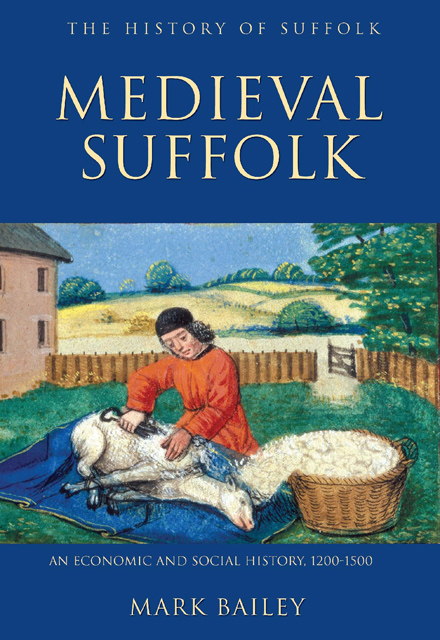Book contents
- Frontmatter
- Contents
- List of Plates
- List of Maps
- List of Tables
- Foreword
- Acknowledgements
- Note on Currency & Units of Measurement
- Abbreviations
- 1 Introduction
- 2 Landlords and their Estates, 1200–1349
- 3 Peasants and their Lifestyles, 1200–1349
- 4 The Agrarian Economy, 1200–1349
- 5 The Suffolk Landscape, 1200–1349
- 6 Towns and the Urban Environment
- 7 Commerce, Crafts and Industry
- 8 Pestilence, Rebellion and the Decline of Villeinage, 1349–1500
- 9 The Rural Economy, 1350–1500
- 10 ‘The World Turned Upside Down’: Rural Society, 1350–1500
- 11 Towns, Trade and Industry, 1350–1500
- 12 Conclusion
- Bibliography
- Index
7 - Commerce, Crafts and Industry
Published online by Cambridge University Press: 15 March 2023
- Frontmatter
- Contents
- List of Plates
- List of Maps
- List of Tables
- Foreword
- Acknowledgements
- Note on Currency & Units of Measurement
- Abbreviations
- 1 Introduction
- 2 Landlords and their Estates, 1200–1349
- 3 Peasants and their Lifestyles, 1200–1349
- 4 The Agrarian Economy, 1200–1349
- 5 The Suffolk Landscape, 1200–1349
- 6 Towns and the Urban Environment
- 7 Commerce, Crafts and Industry
- 8 Pestilence, Rebellion and the Decline of Villeinage, 1349–1500
- 9 The Rural Economy, 1350–1500
- 10 ‘The World Turned Upside Down’: Rural Society, 1350–1500
- 11 Towns, Trade and Industry, 1350–1500
- 12 Conclusion
- Bibliography
- Index
Summary
England’s economy and society became significantly more commercialized during the course of the Middle Ages. This is reflected in an expansion in the supply of money, the provision of smaller denominations of coin, the emergence of credit markets, and the growth of towns, weekly markets and seasonal fairs (chapter 6). The existence of more formal markets and fairs, with legal structures to enforce the rules of trade, reduced the costs and risks associated with commerce, and therefore encouraged more people to produce goods and services for consumption by others rather than for themselves. The economy of Suffolk was strongly influenced by this growth in commercial enterprise: its proximity to London and the Continent, its high population density, the high degree of commercialization of agricultural production on many farms, and its exceptionally high density of market and fair foundations are indicative of the strength of commercial opportunity and activity.
The commercialization of agriculture was paralleled by the growing sophistication of the labour market and the development of crafts and services. The range and availability of these employment opportunities grew during the twelfth and thirteenth centuries, providing supplementary income for the high proportion of the population with insufficient land to sustain themselves. Much of this employment was geared to servicing the basic needs of farming (e.g. metal working, carting, carpentry), or involved the processing and retailing of food and drink (e.g. baking, brewing, cooking, fishing) or the processing of natural and renewable resources (e.g. providing fuel from woodland, turf and bracken). However, other activities involved more specialist skills, a greater division of skilled labour during the manufacturing process and some capital investment (e.g. textile manufacture and shipbuilding).
The purpose of this chapter is threefold. The first is to consider the range of employment opportunities available in Suffolk: changes in the fortunes and scale of particular by-employments, crafts and industries – such as the extraordinary growth of woollen textile manufacture after the mid-fourteenth century – are considered in chapter 11. Second, to assess the extent to which the labour force was geographically mobile. And, finally, to explore the efficiency of the local transport network and to identify the principal markets for Suffolk produce and manufactures.
- Type
- Chapter
- Information
- Medieval SuffolkAn Economic and Social History, 1200-1500, pp. 152 - 175Publisher: Boydell & BrewerPrint publication year: 2007



